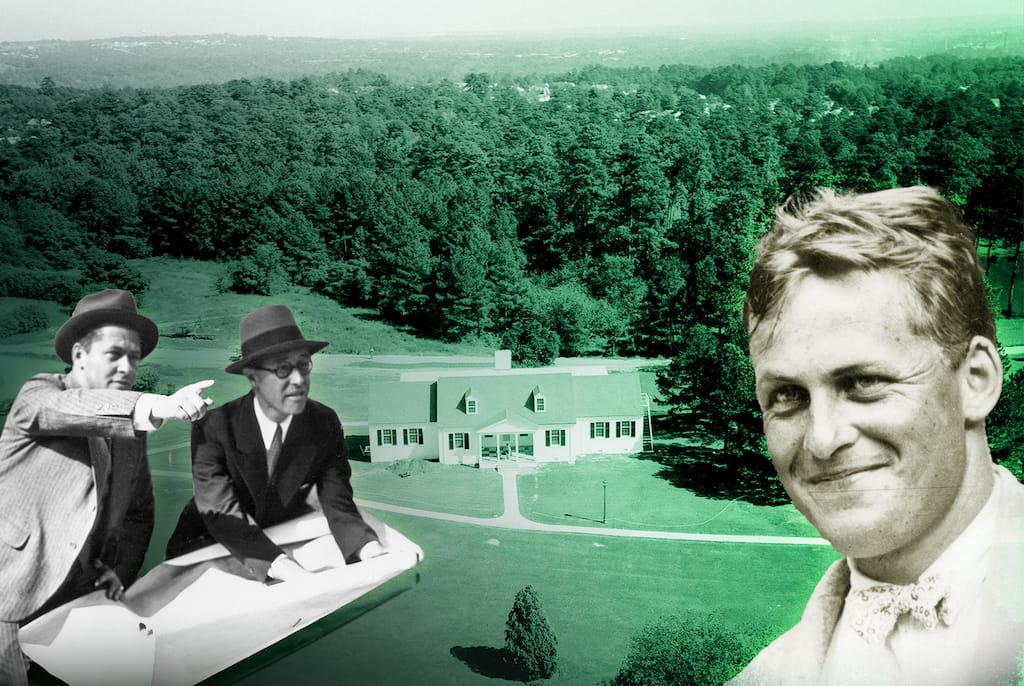Bobby Jones never revealed exactly why he retired from active competitive play at the age of 28 after winning what was then known as The Great Quadrilateral in 1930: U.S. and British Amateur Championships and the U.S. Open and (British) Open Championship all in the one year.
I expect Jones’s wife wanted him at home more, settled into family life and committed to his mainstay lawyerly duties and various business interests. He had also signed up to make a series of instructional films for Warner Brothers in Hollywood and begun to design golf clubs for the Spalding Company (he had a mechanical engineering degree from Georgia Tech) and was about to begin writing a lucrative syndicated golf column published throughout the USA and several books too, which put his amateur status in doubt? He never declared himself to be a pro but he never competed as an amateur again either.
In 1931, Jones began working on his pet, lifetime project – the construction of Augusta National Golf Club, which formally opened for play in 1933, with the first staging of a tournament he (modestly) named The Invitational. It was not until 1939 that Jones’s collaborating partner, Clifford Roberts, had his own way by succeeding (against Jones’s wishes) in rebranding it The Masters Tournament.
Although fully retired from tournament play, Jones played in twelve Masters between 1934 and 1948 (no tournament was held in the years 1943-1945 due to WWII)
It was the only tournament (apart from occasional exhibition matches) in which he took part. Considering the lack of competitive sharpness, he played very well – finishing 13th in the 1934 Masters. He played another 11 times but never managed to finish any better.
Another little known fact is that Alister Mackenzie was not Jones’s first-choice as course architect. Even Mackenzie did not know. Sir Guy Campbell was the favoured one. Although born in London, Campbell attended University in St. Andrews and spent a large part of his life there where he was a prominent member of the R&A – winning several of the club’s prestigious medal tournaments.
A regular competitor in The Amateur Championship as well as being a fine cricketer and oarsman, Campbell was the great-grandson of Robert Chambers, golf historian and co-designer of the original 9-holes course at Hoylake.
Campbell joined the staff of the London Times in 1920 as a special correspondent and later became a sub-editor. At the same time he began designing golf courses in partnership with Cecil Hutchinson and S. V. Hotchkin.
His course designs (and renovations) include some beauties: Ashridge Park, Leeds Castle, Southdown, Prince’s, Royal Cinque Ports, Rye, Felixstowe, Seacroft, Shoreham, West Sussex (all in England), The Haagsche (Netherlands), North Berwick (West Links) and East Lothian (Scotland), Killarney and Royal Dublin (Ireland).
Bobby Jones and Sir Guy Campbell had several mutual friends and acquaintances on both sides of the Atlantic, among which were: J. Victor East, the clubmaker of choice for both men and Bernard Darwin. Campbell’s local knowledge and course architectural philosophy made an impression. It’s likely they may have discussed Jones’s Dream Project even before the Berckman’s Fruitland Nursery property was identified.
Pensacola trial lawyer and Jones Family archivist, Sidney Matthew, published an article in the September 2021 issue of Following Through (the official publication of the British Golf Collector’s Society, edited by the St. Andrews-based Irishman, Roger McStravick) in which he states he is in possession of correspondence that can prove Campbell was offered the job, subject to travelling to America to survey the land and finalising terms.
Despite several enthusiastic letters exchanged back and forth, it seems ‘complications’ at home prevented Campbell from crossing the Atlantic in a timely fashion and, as a result, the opportunity to achieve golfing immortality was forfeited.
When touting for projects, Mackenzie always spoke about ‘finality’ but the Augusta layout did not ‘follow through’ on this promise. It has undergone continual changes over the decades. The Club’s annual Media Guide shows that eleven different architects have made over 60 significant hole changes to the course since its inception. Not much finality there! It is possible Sir Guy Campbell may have employed some of these changes from the beginning if he had pre-empted MacKenzie but how are we to know?
In the past twenty years alone, the length of the course has gone from 6,985 yards to 7,510 yards, tree-planting has continued apace as well as rough grown that was never seen on the property previously.
How would somebody have visualised that in 1932?
Jones’s Masters record:
- 1934: 76-74-72-72—294, tied for 13th
- 1935: 74-72-73-78—297, tied for 25th
- 1936: 78-78-73-77—306, 33rd
- 1937: 79-74-73-77—303, tied for 29th
- 1938: 76-74-72-75—297, tied for 16th
- 1939: 76-77-78-73—304, tied for 33rd
- 1940: 79-76—155, withdrew
- 1941: 76-74-78-79—307, 40th
- 1942: 72-75-79-78—304, tied for 29th
- 1946: 75-72-77-78—302, tied for 32nd
- 1947: 75-79-78-80—312, 56th
- 1948: 76-81-79-79—315, 39th
“I shall never forget my first visit to the property which is now Augusta National. The long lane of magnolias through which we approached was beautiful. The old manor house with its cupola and walls of masonry two feet thick was charming. The rare trees and shrubs of the old nursery were enchanting. But when I walked out on the grass terrace under the big trees behind the house and looked down over the property, the experience was unforgettable. It seemed that this land had been lying here for years just waiting for someone to lay a golf course upon it”
— Bobby Jones from Golf Is My Game























Leave a comment